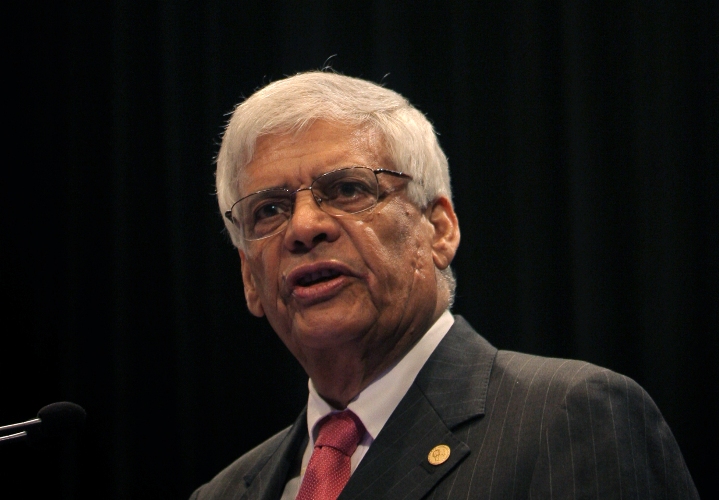In its May Monthly Oil Market Report OPEC lays the blame for the dramatic sell-off in oil commodity markets 5 May on profit taking following margin calls from prominent investors such as Goldman Sachs.
Market commentators have come to divergent opinions about the exact cause of the price collapse. Felix Salon at Reuters attributes it to sell-offs by computerised trading algorithms – so-called ‘black-box’ traders – triggered by the burst of the silver bubble, an inflation hedge asset which increased from $27 to $47 an ounce between early February and May despite the yield on 10-year Treasury bond falling from 3.7% to less than 3.2% during the same period, indicating the potential for disinflation as global monetary policy looks set to tighten.
Other analysts cite a series of events that together add up to a less risky and buoyant outlook for oil markets than once thought. UBS analysts blamed “”slowing growth, the hawkish tone of China officials and severely crowded positioning” for the sell-off, while Deutsche bank cited the end of the US Federal Reserve’s second round of quantitative easing, which it says helped inflate commodities markets.
One of the early sellers was Soros Fund Management, a firm with a broad macro outlook. Once a fund of this size begins to sell in bulk, others follow.
The global daily turnover in oil markets is $200 billion, enough to dampen most excesses from speculative activity. While OPEC fingers a margin call by Goldman Sachs, this view is not shared by analysts.
Instead, “the magnitude of the correction appears in large part to have been exacerbated by algorithmic traders unwinding positions,” Credit Suisse analysts are quoted in Reuters as saying. Black boxes are responsible for half of all oil trades.
One reason for OPEC’s emphasis on the increased amount of speculative activity in oil markets may be the criticism the co-operative received for restricting supply in the wake of the 2008 financial crisis in a bid to shore up prices.
The report labels the market plunge earlier this month “unwarranted volatility” and minimizes the impact of supply uncertainties. If the price plunge was caused by black box traders, such “unwarranted volatility” may be here to stay.
The Reference Basket moved between $115 and $121 barrel over the month, with even more pronounced volatility in WTI and Brent prices. OPEC described the weekly fall in both WTI and Brent of almost $17/barrel as “an inevitable adjustment in prices which brought them more in line with short term market fundamentals”.
The continued weakness of the dollar is also supporting prices. The report cites the monthly increase prior to the sell-off on 5 May was 14% in euro terms, but 28% in dollar terms.
The report acknowledges that “risks to the downside seems to have increased” in terms of global demand, with the annualized rate of growth of the US economy slowing to 1.8% in the first quarter of 2011 and the continued fall-off in demand from Japan following the natural disasters there.
The report also stresses the potentially price-negative implications of inflationary pressures across the globe, the looming end of QE2, the ongoing debt crises in the Euro-zone and the decline in demand in advanced economies due to austere fiscal policy.
Balancing this, OPEC appears to be putting faith in emerging markets, saying, “the growth drivers continue to be developing economies, India and China”, but confirms “economic uncertainties are clouding market needs for the remainder of the year”.
If, as some predict, China’s growth may be hampered by rapidly rising inflation, the OPEC theory that emerging markets are “offsetting” weak advanced economies may prove optimistic.
The report also acknowledges the increasing contribution of non-OPEC oil to the world market: “non-OPEC production has shown strong growth of 0.8 million barrels per day in the first quarter of 2011, a trend which is to continue in coming quarters”.
This was written before US President Barack Obama announced a renewed drive for domestic offshore drilling, citing increasing consumer unrest and the pressure high oil prices are putting the US economic recovery. The average price at the pump in the US has recently risen above $4 gallon.
The organisation hopes stable supply-side fundamentals will dampen future volatility, citing “ample spare capacity, adequate stock levels and lower demand for OPEC crude during the first half of the year […] amid considerable uncertainties, OPEC stands ready to meet real crude oil needs”.





